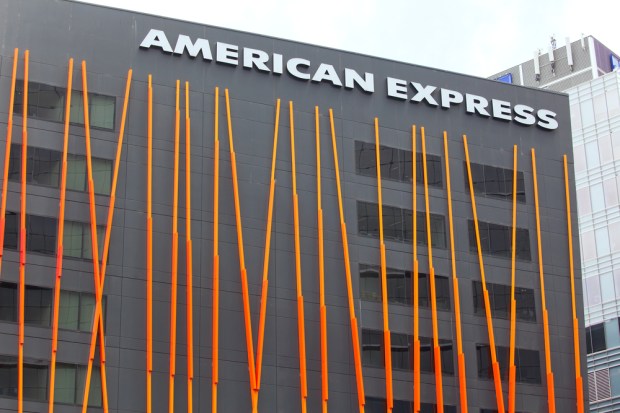Rewards Hit Margins But Amex 2Q A Street Beat

Amex CFO Jeff Campbell told analysts that while card member spending grew, so did the costs of rewarding those well-heeled cardholders to keep them in the Amex boat. He also made it clear that Costco is increasingly in their rearview mirror as lending offers a runway stretching ahead for growth.
Neither a borrower or lender be?
Well, maybe the latter…
For American Express, lending was in part the name of the earnings game, helping the card giant beat on the bottom line despite increased costs tied to rewards programs meant to gain new customers and retain existing ones.
Net income for the second quarter was $1.47 a share, better than the consensus of $1.43.
That net income was reported amid growing expenses, and those expenses were tied to credit card rewards, a lure and a bane of doing business in the credit card business. As total expenses were up 21 percent year on year to $5.8 billion, card member rewards (points redeemed for hotel rooms and the like) were up nine percent to $1.9 billion.
Within the rewards activity, American Express has been competing for customers who typically spend more via card purchases than might be seen elsewhere (and who also pay hefty annual fees), boosted by perks like free Uber rides. Redemption utilization of membership rewards stood at 95 percent, flat with prior years.
Against this backdrop, net card fees — a contributor to revenues — grew by eight percent year over year, with growth in the Platinum and Delta card portfolios.
Revenues also gained some traction, net of interest expense, and were up one percent year on year. But stripping out last year’s Costco business, growth actually accelerated from the low- to mid-single-digit pace seen in past quarters, to eight percent from last year.
The traditional card loans on the books stood at $67.9 billion, up 11 percent from last year — and of that tally, and also up 10 percent, the majority were in the United States, at about $58.5 billion, as Amex has grown loans with existing customers. As has been seen with other lenders, loan loss reserves were also up, by 21 percent, to $1.3 billion. Net writeoffs stood at 2.1 percent of the book, up from 1.8 percent as a ratio last year. Chief Financial Officer Jeffrey Campbell noted that the provision will see a trend upward, albeit “gradually,” as new accounts season.
Billings on an adjusted basis were up eight percent adjusted for Costco, said Campbell, and small business and middle market segments remained healthy. SMEs are defined as entities with less than $300 million in annual revenues, with low double-digit percentage gains year on year internationally and six percent in the U.S. Markets of note included the U.K., up 15 percent, and Japan, up 17 percent. In his remarks, Campbell stated that “although we face intense competition in the U.S. and the regulatory environment is uncertain in many markets around the world, we’ve remained focused on driving more volume under our network, and we feel good about the diversity of our billings growth.”
Looking ahead, Campbell seemed sanguine about near-term prospects, as he stated the company is “well positioned to compete effectively” in what he termed a “challenging environment” and that that full year top line growth will actually be above the 6 percent ceiling that had been laid out at the March 2017 investor day. Cost cuts are on track to reach $1 billion on an annual basis by the end of this year. The top line will get a boost through lending activities, with what Campbell termed “a long runway” for growth. Earnings per share projections were maintained at $5.60 to $5.80.
